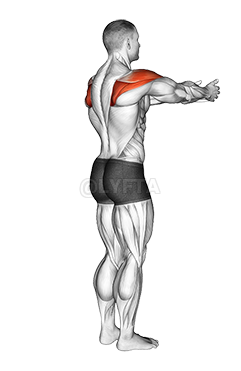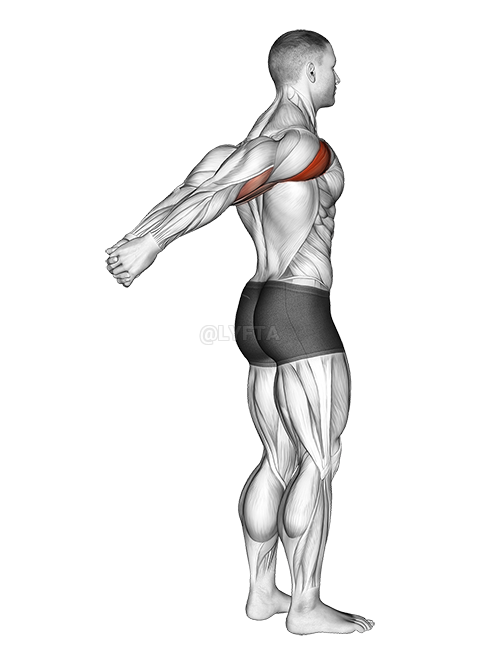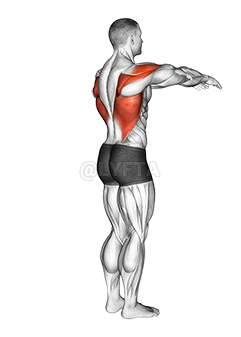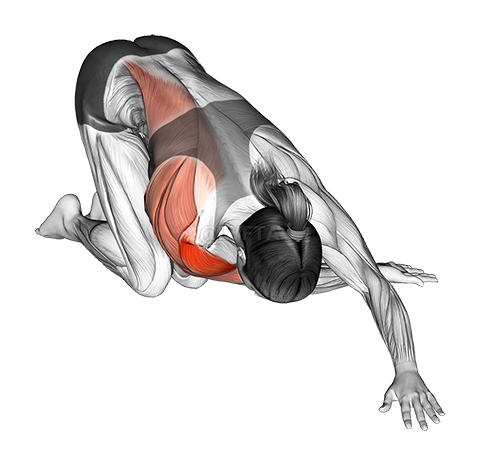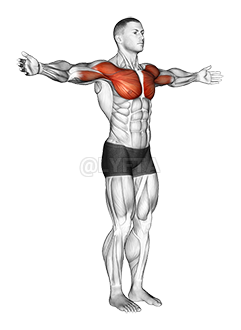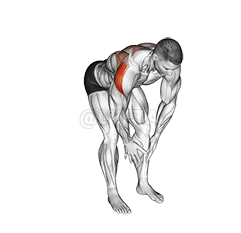
Rotator Cuff
Exercise Profile
Related Exercises:
Introduction to the Rotator Cuff
The Rotator Cuff exercise is a beneficial workout that specifically targets the small muscles around the shoulder joint, aiding in stabilization and allowing for a wider range of motion. It is particularly suitable for athletes involved in throwing sports, individuals recovering from shoulder injuries, or anyone seeking to strengthen their upper body. By incorporating this exercise into their routine, individuals can potentially improve their performance in sports, prevent shoulder injuries, and maintain overall shoulder health.
Performing the: A Step-by-Step Tutorial Rotator Cuff
- Bend your elbows to a 90-degree angle with your palms facing down, and your upper arms parallel to the ground.
- Slowly rotate your forearms upward, keeping your elbows close to your sides, until your palms are facing forward.
- Hold this position for a moment, feeling the tension in your shoulder muscles.
- Gradually lower your arms back to the starting position, repeating this movement for the desired number of repetitions.
Tips for Performing Rotator Cuff
- Maintain Correct Posture: One common mistake that people often make is not maintaining the correct posture while performing the exercises. You should keep your spine straight and your shoulders relaxed. Avoid hunching or rounding your shoulders as it can put undue stress on your rotator cuff muscles and lead to injury.
- Start with Light Weights: When you are just starting out with rotator cuff exercises, it's advisable to start with light weights. This is because the rotator cuff muscles are relatively small and can be easily injured if overloaded. Gradually increase the weight as your strength and endurance improve.
- Control Your Movements: Avoid jerky or rapid movements while performing
Rotator Cuff FAQs
Can beginners do the Rotator Cuff?
Yes, beginners can do rotator cuff exercises. It's actually recommended to include them in your routine to strengthen the shoulder muscles and prevent injuries. However, it's important to start with light weights and focus on proper form to avoid straining these muscles. It may be beneficial to learn these exercises under the guidance of a physical therapist or a trained fitness professional initially.
What are common variations of the Rotator Cuff?
- The Infraspinatus is another variation, responsible for the rotation and extension of the shoulder.
- The Teres Minor is a smaller muscle of the rotator cuff, aiding in the outward rotation of the humerus.
- The Subscapularis is the largest rotator cuff muscle, which controls the ability to rotate the arm inward.
- The Teres Major, while not technically part of the rotator cuff, is often associated with it due to its role in shoulder movement and stabilization.
What are good complementing exercises for the Rotator Cuff?
- The Lateral Raise is another exercise that complements the Rotator Cuff by primarily targeting the deltoid muscles. These muscles work in unison with the rotator cuff to enhance shoulder mobility and stability, thus reducing undue strain on the rotator cuff.
- The Scapular Retraction exercise is beneficial as it targets the rhomboids and trapezius muscles. These muscles are critical for maintaining proper posture and alignment of the shoulder girdle, which in turn helps in reducing stress on the rotator cuff.
Related keywords for Rotator Cuff
- Rotator Cuff workout
- Bodyweight shoulder exercises
- Home shoulder workouts
- Rotator Cuff strengthening exercises
- Bodyweight Rotator Cuff workout
- Shoulder strengthening exercises
- No-equipment shoulder workout
- Rotator Cuff exercises at home
- Bodyweight exercises for shoulder strength
- Rotator Cuff bodyweight training
